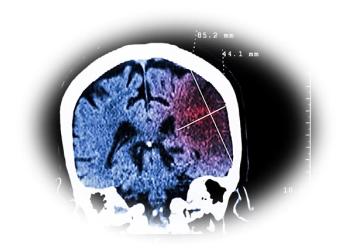
The Journal of Respiratory Diseases
- The Journal of Respiratory Diseases Vol 6 No 10
- Volume 6
- Issue 10
Diagnostic Puzzlers: A case of progressive dyspnea and pleuritic chest pain
A previously healthy 56-year-old woman presented to her primary care physician with progressive dyspnea and pleuritic chest pain. She was afebrile and had a heart rate of 83 beats per minute, blood pressure of 104/70 mm Hg, and respiration rate of 20 breaths per minute. Her oxygen saturation was 87% on room air and 92% while receiving 3 L of oxygen via nasal cannulae.
A previously healthy 56-year-old woman presented to her primary care physician with progressive dyspnea and pleuritic chest pain. She was afebrile and had a heart rate of 83 beats per minute, blood pressure of 104/70 mm Hg, and respiration rate of 20 breaths per minute. Her oxygen saturation was 87% on room air and 92% while receiving 3 L of oxygen via nasal cannulae.
A chest radiograph revealed a small left pleural effusion, but was otherwise clear. Her symptoms persisted, with worsening dyspnea. A chest CT scan revealed a large filling defect at the origin of the main pulmonary artery, with defects in the right and left pulmonary arteries consistent with a large saddle pulmonary embolus.
She was treated with enoxaparin and was discharged home. She returned 4 days later with worsening shortness of breath despite adequate anticoagulation. A repeated CT scan of the chest showed no difference in the filling defect (Figure 1). However, significant thrombocytopenia had developed after the introduction of enoxaparin.
Because of worsening respiratory failure despite anticoagulation and because of the development of thrombocytopenia, an elective pulmonary embolectomy was performed. Figure 2 shows an intraoperative view of the patient's main pulmonary artery.
What is the likely diagnosis? How would you proceed?
A case of progressive dyspnea and pleuritic chest pain: During surgery, a tumor was detected in the patient's main pulmonary artery (Figure 2). The tumor was surgically removed, although complete resection was not possible. Biopsy confirmed pulmonary artery sarcoma.
Discussion
Pulmonary artery sarcoma is often mistaken for pulmonary embolism. Most pulmonary artery sarcomas arise from the dorsal area of the main pulmonary artery outflow trunk, although tumors may also arise from the right and left pulmonary arteries, the pulmonary valve, and the right ventricular outflow tract.
The most common symptoms of pulmonary artery sarcoma include dyspnea (67%), pleuritic chest pain (54%), cough (43%), and hemoptysis (22%). These symptoms are also common in patients with pulmonary thromboembolism, and pulmonary artery sarcomas are frequently misdiagnosed as chronic thromboembolic disease. A lack of risk factors for deep venous thrombosis and a lack of response to anticoagulation should raise suspicion of pulmonary artery sarcoma.
MRI is the most specific diagnostic radiographic tool. The sarcomas will enhance with administration of gadolinium, while thrombi will not enhance. However, the index of suspicion for obtaining an MRI needs to be high, because MRI is a less commonly used modality than chest CT.
The definitive diagnosis of pulmonary artery sarcoma is obtained by surgical biopsy, and only a few cases are diagnosed before resection. Complete surgical resection is the only means of cure; however, the overall prognosis is poor. Adjuvant chemotherapy, radiotherapy, or a combination of the two is usually carried out after tumor resection.
Outcome in our patient
The patient was discharged home and she received combined chemotherapy and radiotherapy. Multiple brain metastases developed 6 months after surgery, and the patient died of sepsis associated with pneumonia.
Case and photographs courtesy of Dr Kalpesh Ganatra of Mary Lanning Memorial Hospital, Hastings, Nebraska, and Drs Erik Riesenfeld, Navdeep Singh, Jason Fought, Daniel Weiss, and Bruce Leavitt, of the University of Vermont, Burlington.
Articles in this issue
about 19 years ago
Case In Point: Unilateral agenesis of the diaphragmabout 19 years ago
An update on advances in interventional bronchoscopyabout 19 years ago
Clinical Consultation: Disinfectants and respiratory symptomsabout 19 years ago
Exploring the link between nasal allergy and sinus infectionNewsletter
Enhance your clinical practice with the Patient Care newsletter, offering the latest evidence-based guidelines, diagnostic insights, and treatment strategies for primary care physicians.






















































































































































































































































































